 Technology peripherals
Technology peripherals
 AI
AI
 Nature publishes major progress in quantum computing: the first ever quantum integrated circuit implementation
Nature publishes major progress in quantum computing: the first ever quantum integrated circuit implementation
Nature publishes major progress in quantum computing: the first ever quantum integrated circuit implementation
On June 23, Australian quantum computing company SQC (Silicon Quantum Computing) announced the launch of the world’s first quantum integrated circuit. This is a circuit that contains all the basic components found on a classical computer chip, but on a quantum scale.
The SQC team used this quantum processor to accurately simulate the quantum state of an organic polyacetylene molecule – finally demonstrating the effectiveness of the new quantum system modeling technique.
“This is a major breakthrough,” said SQC founder Michelle Simmons. Today's classical computers have difficulty simulating even relatively small molecules due to the large number of possible interactions between atoms. The development of SQC's atomic-scale circuit technology will allow the company and its customers to build quantum models of a range of new materials, whether drugs, battery materials or catalysts. It won’t be long before we start realizing new materials that have never existed before. "
The research results are published in the new issue of "Nature" magazine.
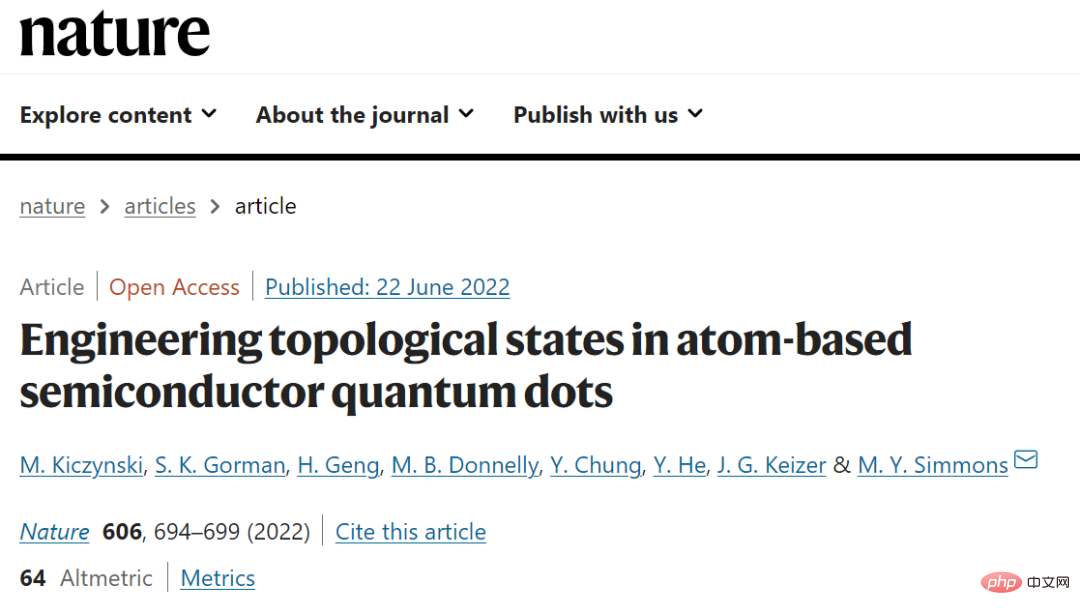
Paper link: https://www.nature.com/articles/s41586-022-04706-0
Replicating Classical Computers at the Quantum Level
Just like regular (classical) computers, quantum computers use transistors to encode information. But unlike classical computers, quantum computers' transistors are on the quantum scale - as small as the size of an atom. Classical computers use bits 0 and 1, while quantum transistors use 0, 1, or a mixture of 0 and 1 to encode quantum information.
Engineers can exploit the quantum effects of single-atom transistors to perform calculations. But in the quantum world, things are not that simple.
In the quantum world, particles exist in the form of "superpositions" - their position, momentum and other physical properties are not defined by a single value, but are represented by probabilities . Through superposition, qubits can store multi-dimensional computational data that is much more complex than ordinary bits.
As a result, quantum computers are expected to be thousands or even millions of times faster than classical computers, and perform calculations far more efficiently than even the most powerful classical computers.
However, they have other magical features.
When the superposition state extends to multiple systems or atoms, you get an "entangled state", where the qubits are related to each other. When qubits become entangled, their changes affect each other. This quantum effect is expected to have applications in the field of encryption.
But at the same time, this effect also brings trouble to scientists in building usable quantum computers.
The bottom line is that the probabilistic nature of quantum systems means they are highly prone to error. Therefore, a major challenge in creating quantum machines is to make them coherent to reduce noise in the signal. It's this problem that the SQC team thinks they've cracked.
"To create a quantum computer, we have to work at the atomic scale so that we can access quantum states and make them coherent and fast." SQC founder, paper Corresponding author Michelle Simmons said.
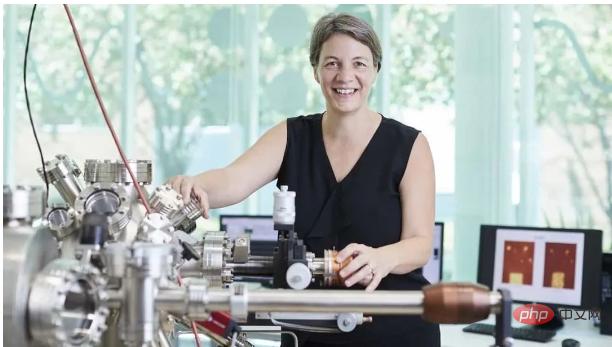

Corresponding author of the paper Michelle Simmons
Simmons' team built the world's first single-atom transistor in 2012 and made the first atomic-scale integrated circuit in 2021. "What we're looking at is the next device - before we can build a quantum computer that people can use, we still need to solve some kind of commercially relevant algorithm. When we first started, we didn't know what we were going to demonstrate on that circuit. What."
The team chose polyacetylene - a carbon-based molecular chain with the chemical formula (C2H2)n, where n stands for repeat.
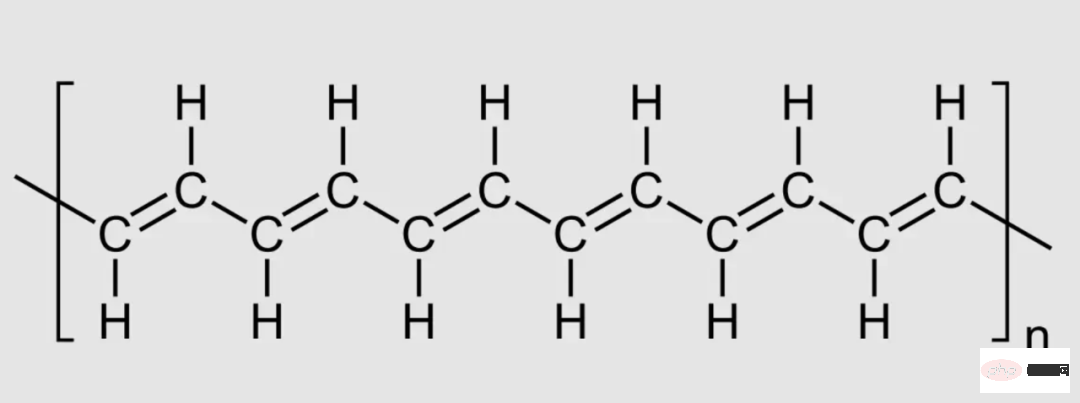
Polyacetylene structure diagram
The atoms in polyacetylene are held together by covalent bonds. A single bond means two atoms share one outer electron, and a double bond means two electrons are shared. The alternation of single and double bonds between carbon atoms in the polyacetylene chain makes this molecule an interesting object of study in physical chemistry.
The Su-Schrieffer-Heeger (SSH) model is a well-known representation of molecular theory that uses interactions between atoms and their electrons to explain the physical and chemical properties of compounds. "This is a well-known problem that can be solved with a classical computer because there are so few atoms in it that a classical computer can handle all the interactions. But we are now trying to solve it with a quantum system," Simmons said.
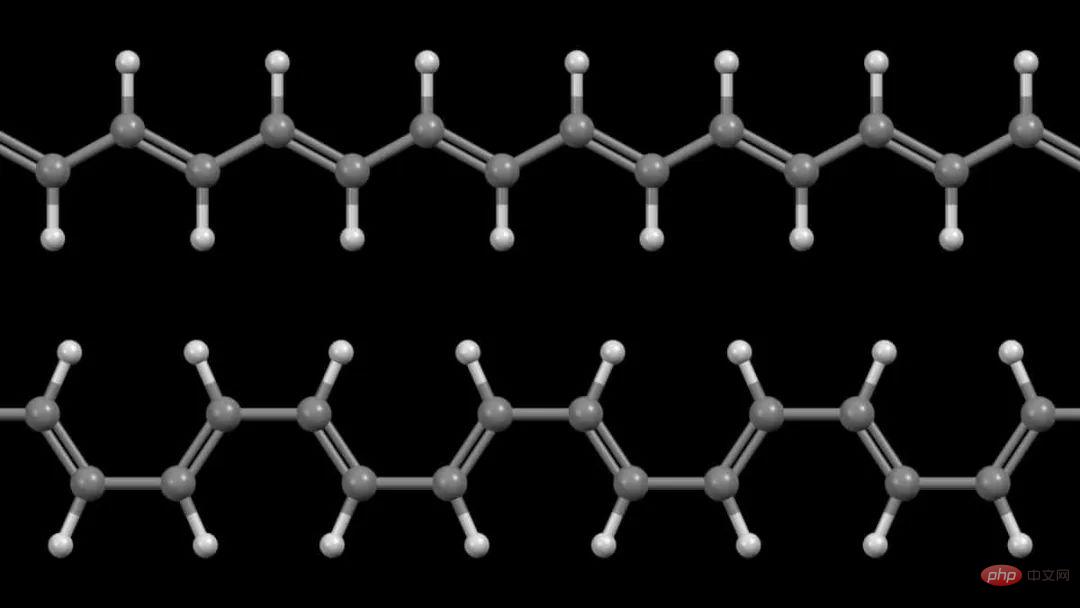
##The ball-and-stick model of polyacetylene shows the relationship between carbon atoms (dark gray) and hydrogen atoms (light gray) Single and Double Bonds
So how did the SQC team simulate polyacetylene on their quantum device?
“We let the processor itself simulate the single and double bonds between carbon atoms,” explains Simmons. “We engineered it with sub-nanometer precision to try to create Mimicking chemical bonds within the system. So that's why it's called a quantum analog simulator."
Using atomic transistors in the machine, the researchers simulated polyacetylene covalent bonds in .
According to SSH theory, there are two different situations in polyacetylene, called "topological states" - the name "topology" is because of their different geometric shapes.
In one state you can cut the link at a single carbon-carbon bond, so you have a double bond at the end of the chain. Alternatively, you can cut off the double bond, leaving a single bond at the end of the chain, which separates the atoms at both ends because of the longer distance of the single bond. The two topological states exhibit completely different behaviors when electric current passes through the molecular chain.
This is the theory. "When we built the device, that's exactly what we saw," Simmons said. "So it's very exciting." Dr. Charles Hill, Senior Lecturer in Quantum Computing at the University of Melbourne, told I agree with this.
"One of the most promising application scenarios for quantum technology is the use of one quantum system to simulate other quantum systems," said Hill. "In this work, the authors considered a chain of ten quantum dots and used them to simulate the so-called SSH model. This is a remarkable project. The quantum device used for this demonstration was fabricated with sub-nanometer precision. This experiment sets the stage for future simulations of larger and more complex quantum The system paves the way."
The advantage of this complex production process, Simmons believes, is that you "are not creating a new material that you have to invent and figure out how to make."
“We do have atomic sub-nanometer precision,” she added. “The atoms themselves are in the silicon matrix, so we are building the system out of materials that are already used in the semiconductor industry. ."
"There are only two kinds of atoms in the whole device - phosphorus and silicon. We got rid of all the other stuff, all the interfaces, the dielectrics, all the things that cause problems in other architectures stuff. It's simple in concept, but obviously challenging to make. It's a nice, clean, physical, scalable system."
"The challenge is how Put the atom in the right place and you know it's there. It took us ten years to figure out the chemical process that gets the phosphorus atoms into the silicon matrix and makes them protected. (One of the) techniques we use is Scanning tunneling microscope (STM), a photolithography tool."
After placing the silicon plate in a vacuum, the team first heated the substrate to 1100°C and then gradually cooled it to Around 350°C, a flat two-dimensional silicon surface is formed. The silicon is then covered with hydrogen atoms, which can be selectively and individually removed using an STM tip. Phosphorus atoms are placed in newly formed gaps in the layer of hydrogen atoms before the whole thing is covered with another layer of silicon.
SQC quantum devices modeled at the atomic scale "This means we can only make one at a time device,” Simmons admits, “but I think of it like a Swiss watch—it can be very precise and needs to be handmade. My point is, to make a scalable system, you need that kind of precision. And there’s not enough precision. It's difficult to build a quantum state because you don't know what you have. So our view is: yes, it's slower, but you know what you can get." Once the device is built, the algorithm chosen by the research team will have "historic significance." “Simulation algorithms were Richard Feynman’s dream starting in the 1950s,” explains Simmons. "If you want to understand how nature works, you have to build it at that length scale. Can we model the single and double bonds of a carbon molecule with subnanometer accuracy? In fact, we find ourselves Instead of using a single atom to simulate a carbon atom, 25 phosphorus atoms were used." The team found they could control the flow of electrons along the link. "So, you have individual and local control and extended control capabilities," Simmons said. "We have shown that a 10-point link can be implemented with only six electrodes. So there are much fewer electrodes than the actual number of points. This is very useful for scaling. Because fundamentally, in a quantum computer, there is no need for active components. Than, you always want to build fewer gates, otherwise it will scale poorly." Not only does the new device comply with SSH theory, but Simmons believes quantum computers will soon be Will start to simulate problems beyond the current optimal theory. "It opens the door to things we've never imagined before, which is both scary and exciting," she said. The device has similar shortcomings to other quantum computers—in particular, the need for a huge cooling system to keep the operating temperature close to absolute zero, which requires a lot of energy and cost. Due to commercial confidentiality, Simmons was tight-lipped about the project SQC was working on after the initial presentation. Still, she says: "We want to apply it to as many different things as possible and see what we find." 》 The SQC team behind Nature paper "The fact that we can get electrons coherently across the entire chain tells us that this is a very quantum coherent system," she said. "It gives us confidence that the physical system is very stable. This is a sign of the purity of the system. The proof can lead to many different paths. Making larger physical systems is definitely one of them. Observing spin states instead of charge states is another matter." Simmons describes the work as "a journey" that demonstrates an interdisciplinary nature - quantum physicists, chemists, engineers and software engineers are all involved. "This is an exciting field for young people," she said. "This is a case where a basic scientific research project evolved into a practical tool." 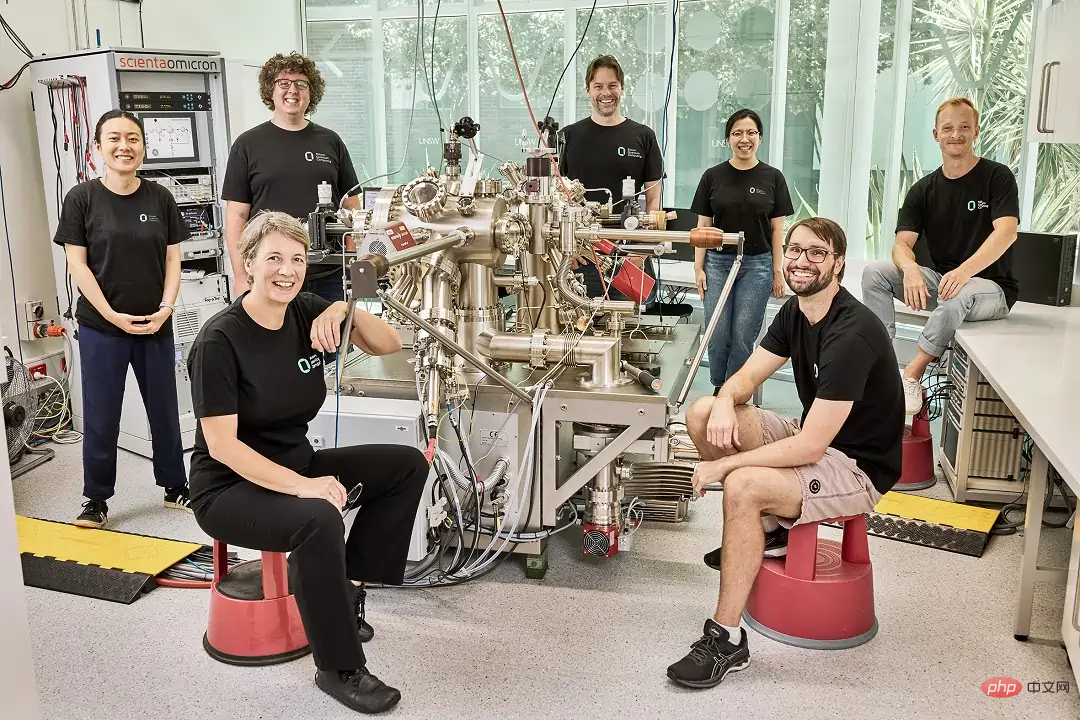
The above is the detailed content of Nature publishes major progress in quantum computing: the first ever quantum integrated circuit implementation. For more information, please follow other related articles on the PHP Chinese website!

Hot AI Tools

Undresser.AI Undress
AI-powered app for creating realistic nude photos

AI Clothes Remover
Online AI tool for removing clothes from photos.

Undress AI Tool
Undress images for free

Clothoff.io
AI clothes remover

Video Face Swap
Swap faces in any video effortlessly with our completely free AI face swap tool!

Hot Article

Hot Tools

Notepad++7.3.1
Easy-to-use and free code editor

SublimeText3 Chinese version
Chinese version, very easy to use

Zend Studio 13.0.1
Powerful PHP integrated development environment

Dreamweaver CS6
Visual web development tools

SublimeText3 Mac version
God-level code editing software (SublimeText3)

Hot Topics
 1386
1386
 52
52
 CUDA's universal matrix multiplication: from entry to proficiency!
Mar 25, 2024 pm 12:30 PM
CUDA's universal matrix multiplication: from entry to proficiency!
Mar 25, 2024 pm 12:30 PM
General Matrix Multiplication (GEMM) is a vital part of many applications and algorithms, and is also one of the important indicators for evaluating computer hardware performance. In-depth research and optimization of the implementation of GEMM can help us better understand high-performance computing and the relationship between software and hardware systems. In computer science, effective optimization of GEMM can increase computing speed and save resources, which is crucial to improving the overall performance of a computer system. An in-depth understanding of the working principle and optimization method of GEMM will help us better utilize the potential of modern computing hardware and provide more efficient solutions for various complex computing tasks. By optimizing the performance of GEMM
 How to calculate addition, subtraction, multiplication and division in word document
Mar 19, 2024 pm 08:13 PM
How to calculate addition, subtraction, multiplication and division in word document
Mar 19, 2024 pm 08:13 PM
WORD is a powerful word processor. We can use word to edit various texts. In Excel tables, we have mastered the calculation methods of addition, subtraction and multipliers. So if we need to calculate the addition of numerical values in Word tables, How to subtract the multiplier? Can I only use a calculator to calculate it? The answer is of course no, WORD can also do it. Today I will teach you how to use formulas to calculate basic operations such as addition, subtraction, multiplication and division in tables in Word documents. Let's learn together. So, today let me demonstrate in detail how to calculate addition, subtraction, multiplication and division in a WORD document? Step 1: Open a WORD, click [Table] under [Insert] on the toolbar, and insert a table in the drop-down menu.
 How to count the number of elements in a list using Python's count() function
Nov 18, 2023 pm 02:53 PM
How to count the number of elements in a list using Python's count() function
Nov 18, 2023 pm 02:53 PM
How to use Python's count() function to calculate the number of an element in a list requires specific code examples. As a powerful and easy-to-learn programming language, Python provides many built-in functions to handle different data structures. One of them is the count() function, which can be used to count the number of elements in a list. In this article, we will explain how to use the count() function in detail and provide specific code examples. The count() function is a built-in function of Python, used to calculate a certain
 Java program to calculate the area of a triangle using determinants
Aug 31, 2023 am 10:17 AM
Java program to calculate the area of a triangle using determinants
Aug 31, 2023 am 10:17 AM
Introduction The Java program for calculating the area of a triangle using determinants is a concise and efficient program that can calculate the area of a triangle given the coordinates of three vertices. This program is useful for anyone learning or working with geometry, as it demonstrates how to use basic arithmetic and algebraic calculations in Java, as well as how to use the Scanner class to read user input. The program prompts the user for the coordinates of three points of the triangle, which are then read in and used to calculate the determinant of the coordinate matrix. Use the absolute value of the determinant to ensure the area is always positive, then use a formula to calculate the area of the triangle and display it to the user. The program can be easily modified to accept input in different formats or to perform additional calculations, making it a versatile tool for geometric calculations. ranks of determinants
 Count the number of occurrences of a substring recursively in Java
Sep 17, 2023 pm 07:49 PM
Count the number of occurrences of a substring recursively in Java
Sep 17, 2023 pm 07:49 PM
Given two strings str_1 and str_2. The goal is to count the number of occurrences of substring str2 in string str1 using a recursive procedure. A recursive function is a function that calls itself within its definition. If str1 is "Iknowthatyouknowthatiknow" and str2 is "know" the number of occurrences is -3. Let us understand through examples. For example, input str1="TPisTPareTPamTP", str2="TP"; output Countofoccurrencesofasubstringrecursi
 How to use the Math.Pow function in C# to calculate the power of a specified number
Nov 18, 2023 am 11:32 AM
How to use the Math.Pow function in C# to calculate the power of a specified number
Nov 18, 2023 am 11:32 AM
In C#, there is a Math class library, which contains many mathematical functions. These include the function Math.Pow, which calculates powers, which can help us calculate the power of a specified number. The usage of the Math.Pow function is very simple, you only need to specify the base and exponent. The syntax is as follows: Math.Pow(base,exponent); where base represents the base and exponent represents the exponent. This function returns a double type result, that is, the power calculation result. Let's
 Python program to calculate the sum of the right diagonal elements of a matrix
Aug 19, 2023 am 11:29 AM
Python program to calculate the sum of the right diagonal elements of a matrix
Aug 19, 2023 am 11:29 AM
A popular general-purpose programming language is Python. It is used in a variety of industries, including desktop applications, web development, and machine learning. Fortunately, Python has a simple and easy-to-understand syntax that is suitable for beginners. In this article, we will use Python to calculate the sum of the right diagonal of a matrix. What is a matrix? In mathematics, we use a rectangular array or matrix to describe a mathematical object or its properties. It is a rectangular array or table containing numbers, symbols, or expressions arranged in rows and columns. . For example -234512367574 Therefore, this is a matrix with 3 rows and 4 columns, expressed as a 3*4 matrix. Now, there are two diagonals in the matrix, the primary diagonal and the secondary diagonal
 Java program example to calculate total score and percentage
Sep 11, 2023 pm 06:01 PM
Java program example to calculate total score and percentage
Sep 11, 2023 pm 06:01 PM
We will demonstrate how to calculate total scores and percentages using a Java program. Total score refers to the sum of all available scores, while the term percentage refers to the calculated score divided by the total score and multiplied by the resulting number 100. percentage_of_marks=(obtained_marks/total_marks)×100 Example 1 This is a Java program that demonstrates how to calculate total scores and percentages. //JavaProgramtodemonstratehowisTotalmarksandPercentagescalculatedimportjava.io.*;publicclassTotalMarks_



